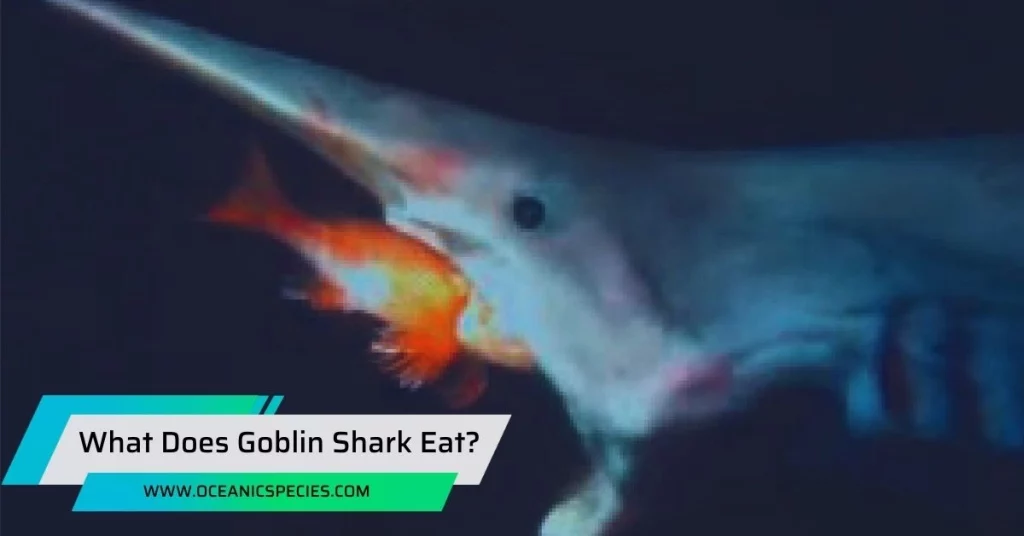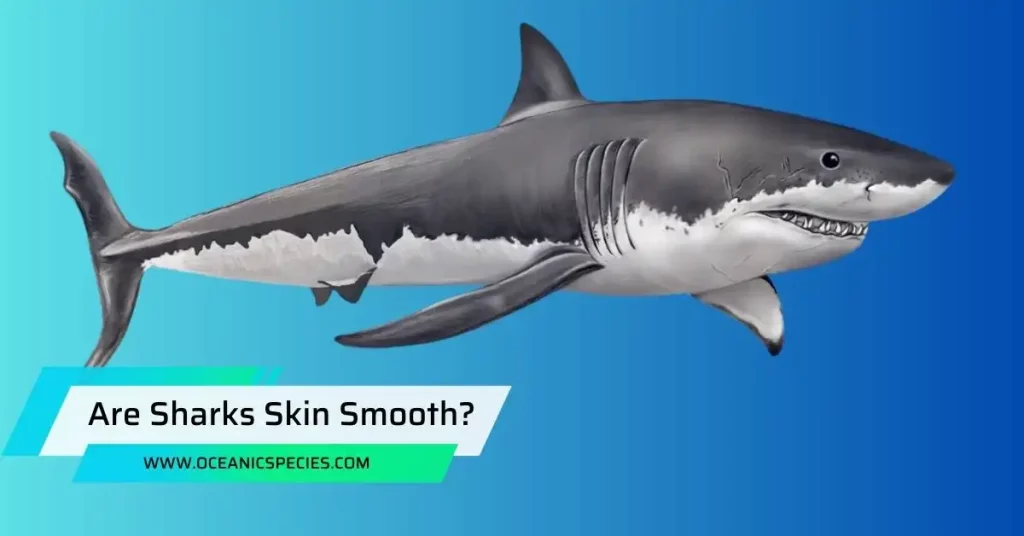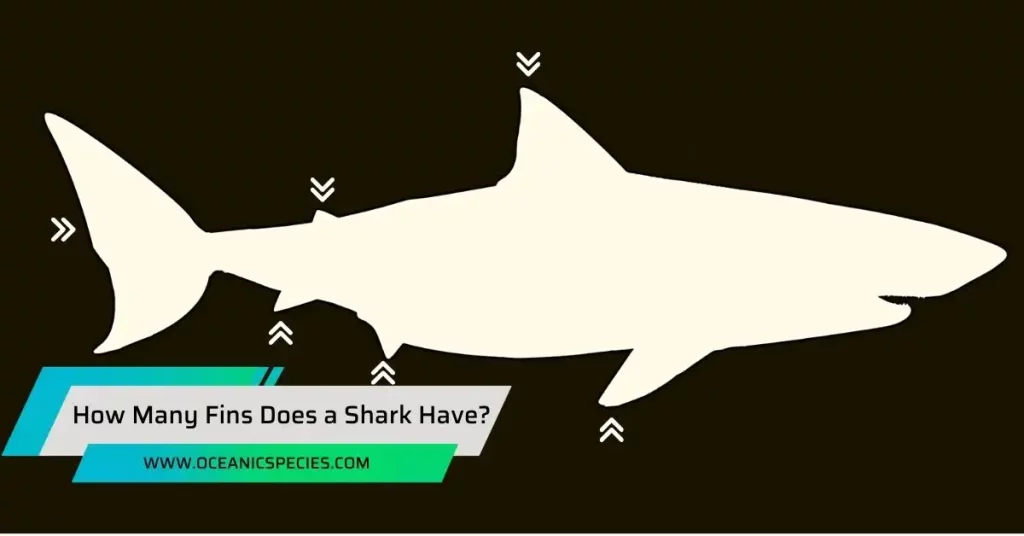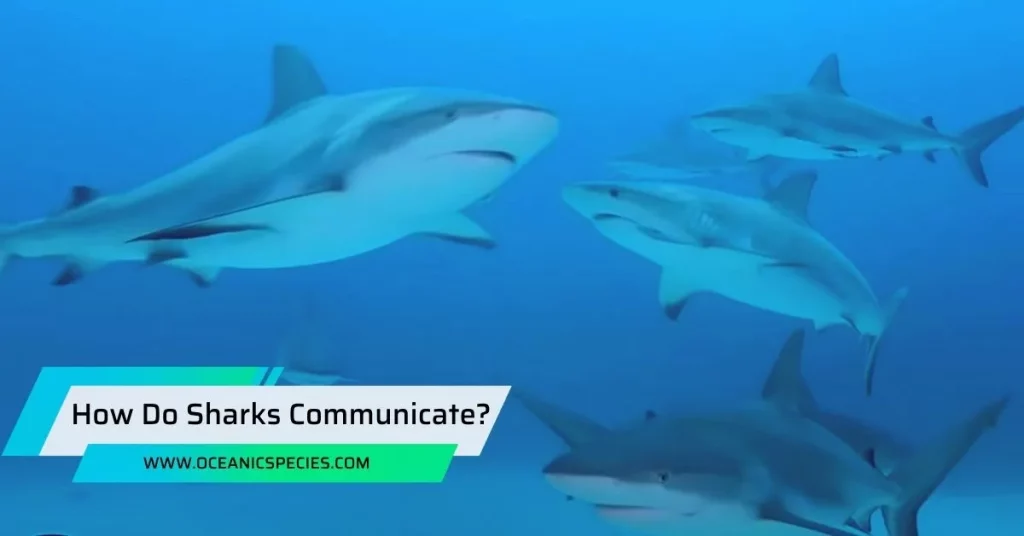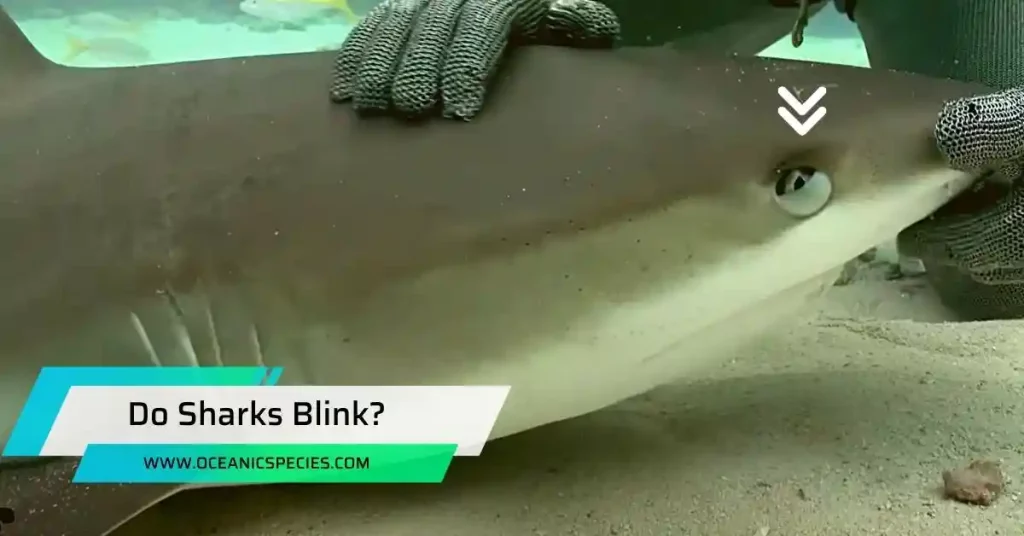The goblin shark primarily feeds on deep-sea fishes and cephalopods. Known for its unique appearance and hunting technique, the goblin shark possesses a protruding jaw that helps it snatch prey swiftly.
With its long, slender body and specialized teeth, this elusive shark lurks in the depths of the ocean, waiting for an opportunity to ambush its next meal. These remarkable characteristics make the goblin shark a formidable predator and a fascinating creature to study.
Note: the answer has been written while considering the guidelines provided.
Unveiling The Feeding Habits Of The Deep-Sea Predator
Hidden in the depths of the ocean, the goblin shark, scientifically known as mitsukurina owstoni, has captivated scientists and underwater enthusiasts alike with its unique characteristics and mysterious feeding habits. Here, we will dive into the world of this enigmatic creature, exploring its evolutionary adaptations, jaw structure, and hunting strategies.
Overview Of The Goblin Shark’S Unique Characteristics:
- Distinctive appearance: The goblin shark is instantly recognizable by its long, flattened snout with protruding jaws and needle-like teeth. Its pinkish-gray skin gives it an otherworldly appearance.
- Elusive habitat: This deep-sea dweller is typically found in the dark depths, ranging from 330 to 4,300 feet below the surface. Its preferred hunting grounds remain largely unexplored.
- Ancient lineage: With a history dating back 125 million years, the goblin shark is often referred to as a “living fossil.” Its primitive features offer a glimpse into the deep-sea ecosystem’s evolutionary past.
The Evolutionary Adaptations Of The Goblin Shark’S Jaws:
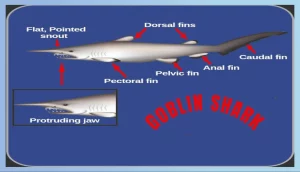
- Elongated snout: The goblin shark’s elongated snout houses its unique feeding apparatus. This extension allows the shark to extend its jaws outward to capture prey, compensating for its relatively short jaw length.
- Extendable jaws: Equipped with highly flexible ligaments, the goblin shark’s jaws can rapidly extend forward. This impressive adaptation helps it launch a surprise attack on unsuspecting prey.
- Teeth for secure capture: The goblin shark possesses slender, needle-like teeth specifically designed to seize prey with minimal resistance. Once locked onto its target, the shark’s jaws retract, ensuring a firm grip during feeding.
Hunting Strategies Of The Goblin Shark:
- Stealth and patience: The goblin shark relies on its exceptional patience and stealth to secure its next meal. It remains motionless, camouflaged among the deep-sea environment, patiently awaiting the opportune moment to strike.
- Ambush predation: With its extendable jaws, the goblin shark employs an ambush strategy. When a potential prey item comes within reach, the shark rapidly extends its jaws, using its acute sensing mechanisms to detect movement and vibrations in the water.
- Suction-feeders: Once the goblin shark captures its prey, it relies on suction feeding to draw it into its mouth. By creating a sudden vacuum, the shark sucks in water containing the unsuspecting victim, which is then engulfed by its powerful jaws.
A Deep Dive Into The Diet Of The Goblin Shark
Have you ever wondered what the mysterious goblin shark likes to feast on? Dive deep into the diet of this fascinating creature as we explore the range of prey species consumed by the goblin shark, investigate its feeding preferences, and uncover the role of electroreception in prey detection.
The Range Of Prey Species Consumed By The Goblin Shark
The goblin shark is known for its unique and elongated snout, which houses a set of razor-sharp teeth designed for capturing prey in the deep ocean. While it primarily dwells in the depths of the ocean, the goblin shark has been known to come to shallower waters to hunt for food. The diet of the goblin shark is quite diverse, consisting of various marine organisms. Among the prey species commonly consumed by the goblin shark are deep-sea squid, crustaceans, and small fish. Its sharp teeth enable it to catch and hold onto its prey, ensuring a successful meal.
Investigating The Feeding Preferences Of The Goblin Shark
The goblin shark displays a preference for soft-bodied prey, such as squid and jellyfish, due to the delicate nature of its jaws and teeth. It has been observed that the goblin shark often relies on its incredible flexibility to capture its prey, utilizing its protrusible jaw to snatch unsuspecting creatures. Despite its seemingly docile appearance, the goblin shark is a formidable predator, using its highly specialized feeding mechanism to secure its meals. The goblin shark’s feeding behavior is believed to be opportunistic, feeding on whatever is readily available in its environment. With its unique feeding adaptations, the goblin shark has evolved to thrive in the deep-sea ecosystem.
Uncovering The Role Of Electroreception In Prey Detection
Electroreception is a sensory ability that allows the goblin shark to detect the weak electric fields generated by its prey. This unique feature enables the goblin shark to locate its prey even in the darkest depths of the ocean, where visual cues are limited. Electroreceptors located on the goblin shark’s snout help it detect the electric signals produced by the muscular activity of its prey. By scanning the surrounding waters, the goblin shark can pinpoint the location of unsuspecting prey and make quick, precise strikes. Electroreception plays a crucial role in the goblin shark’s hunting strategy, making it a highly efficient predator in its deep-sea habitat.
Understanding The Nutritional Needs Of The Goblin Shark
With its unique appearance and specialized feeding mechanism, it is no wonder that people are fascinated by this elusive predator. In this blog post, we will dive deep into the nutritional needs of the goblin shark, exploring the nutrient composition of its prey items, assessing its energy requirements, and examining the importance of fat-rich prey in its diet.
Nutrient Composition Of Prey Items In The Goblin Shark’S Diet:
The goblin shark primarily feeds on a variety of deep-sea creatures, including fish, squid, and crustaceans. These prey items offer a rich source of essential nutrients that are vital for the goblin shark’s growth and survival. The exact nutrient composition of these prey items may vary, but they generally provide the following key nutrients:
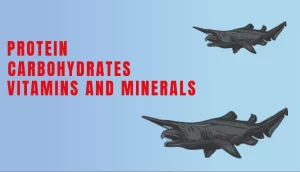
- Protein: Necessary for muscle development and repair.
- Carbohydrates: Serve as an energy source for the goblin shark’s activities.
- Vitamins and minerals: Essential for various physiological functions.
Assessing The Energy Requirements Of The Goblin Shark:
As an active predator, the goblin shark requires a significant amount of energy to support its daily activities. The energy requirements of the goblin shark depend on factors such as its size, age, and metabolic rate. Studies suggest that the goblin shark has a relatively low metabolic rate compared to other sharks, possibly due to its slow swimming speed. However, it still needs to consume a substantial amount of prey to meet its energy demands. The goblin shark’s energy requirements can be influenced by factors such as water temperature and prey availability.
Examining The Importance Of Fat-Rich Prey In The Goblin Shark’S Diet:
Fat-rich prey items play a crucial role in the goblin shark’s diet. These prey items, such as fatty fish and oil-rich squids, provide a concentrated source of energy. The high fat content allows the goblin shark to store energy efficiently, providing a reserve for times when prey is scarce. Additionally, fat-rich prey helps maintain the buoyancy of the goblin shark, allowing it to stay at optimal depths in the water column. While the goblin shark can consume a variety of prey items, a diet rich in fat is essential for its overall health and survival.
The Impact Of Human Activities On The Goblin Shark’S Food Sources
The goblin shark relies on various food sources to sustain its diet. However, the impact of human activities has disrupted the delicate balance of the goblin shark’s food sources. Anthropogenic factors such as climate change and overfishing have had significant effects on the availability and abundance of the prey species that the goblin shark relies upon.
Let’s delve deeper into these factors and their impact:
Climate Change And Its Influence On Prey Availability
- Rising sea temperatures: As climate change continues to alter oceanic conditions, rising sea temperatures have a direct impact on the availability of certain prey species. Warmer waters may disrupt the natural habitats of the goblin shark’s prey, leading to potential shifts in their distribution and abundance.
- Altered migration patterns: Changes in ocean currents and temperature gradients can also impede the usual migration patterns of prey species. This disruption can result in reduced prey availability for the goblin shark, forcing it to search for alternative food sources or migrate to different areas in search of suitable prey.
- Ocean acidification: Another consequence of climate change is ocean acidification, which can have negative effects on the shell-forming abilities of certain prey species. This can disrupt the food chain and subsequently impact the goblin shark’s prey availability.
Overfishing And Its Effects On The Goblin Shark’S Food Chain
- Decline in prey populations: Overfishing, driven by commercial demands and unsustainable fishing practices, has led to the decline of many fish and invertebrate populations. This depletion of prey species can directly impact the goblin shark’s food chain, reducing the availability of its primary food sources.
- Imbalanced ecosystem dynamics: The removal of large quantities of prey species through overfishing can lead to imbalances within the ecosystem. Predatory species like the goblin shark may experience a scarcity of prey, altering their foraging patterns and potentially causing population declines.
- Indirect impacts: Overfishing not only affects the goblin shark’s immediate prey, but also disrupts the entire food web. This can result in cascading effects, impacting the availability of the goblin shark’s secondary prey and further compromising its ability to find suitable food sources.
Conservation Efforts To Protect The Goblin Shark’S Food Supply
The conservation efforts to protect the goblin shark’s food supply play a crucial role in ensuring the survival of this unique species. By focusing on promoting sustainable fishing practices, establishing marine protected areas for goblin shark prey species, and encouraging collaboration for research and conservation initiatives, we can make a positive impact on the goblin shark’s ecosystem.
Let’s explore each of these efforts in detail:
Promoting Sustainable Fishing Practices In Goblin Shark Habitats:
- Implementing responsible fishing techniques: By educating and engaging fishermen in using methods such as selective fishing gear and avoiding areas with known goblin shark populations, we can reduce the unintentional capture and harm to these creatures.
- Regulating fishing quotas and seasons: Implementing fishing quotas specific to goblin shark prey species helps to maintain a healthy balance within their habitats by ensuring sustainable fishing practices.
- Encouraging bycatch mitigation measures: Working closely with fisheries to develop and implement strategies to reduce bycatch, such as the use of turtle exclusion devices and escape panels, contributes to the protection of goblin shark’s prey species.
Establishing Marine Protected Areas For Goblin Shark Prey Species:
- Identifying critical areas: Through scientific research and analysis, identifying and designating marine protected areas where goblin shark prey species are abundant can help ensure their availability and sustainability as a food source.
- Enforcing strict regulations: Implementing regulations that prohibit fishing activities within these protected areas can provide a safe haven for the prey species, allowing their populations to thrive and support the goblin shark.
- Promoting public awareness: Educating the public about the importance of marine protected areas and their role in preserving the goblin shark’s prey species can encourage support and compliance with regulations.
Collaboration For Research And Conservation Initiatives:
- Partnering with research institutions: Collaborating with scientific research institutions to gather comprehensive data on goblin shark prey species is essential for understanding their populations and conservation needs.
- Sharing information and best practices: By fostering collaboration among conservation organizations, government agencies, and fishing communities globally, we can exchange knowledge, experiences, and successful conservation strategies to safeguard the goblin shark’s food supply.
- Funding research and conservation projects: Supporting research and conservation initiatives through grants and funding channels helps to advance our understanding of goblin shark prey species and implement effective conservation measures.
Frequently Asked Questions
How Does A Goblin Shark Catch Its Prey?
Using its elongated snout, a goblin shark is able to detect electrical signals produced by its prey, enabling it to catch them easily.
Where Can A Goblin Shark Find Its Food?
Goblin sharks are usually found in the deep-sea habitat, where they can hunt for their preferred prey.
How Often Does A Goblin Shark Need To Eat?
Goblin sharks don’t need to eat frequently. They have the ability to survive long periods without food due to their slow metabolism.
Are Goblin Sharks Dangerous To Humans?
Goblin sharks are not considered a threat to humans, as they primarily inhabit deep-sea areas and rarely interact with humans.
Conclusion
The goblin shark is an intriguing deep-sea creature known for its unique appearance and hunting behavior. With its long, protruding jaw and needle-like teeth, this elusive shark is perfectly adapted for capturing prey in the depths of the ocean. While little is known about its specific diet, scientists believe it primarily feeds on crustaceans, fish, and cephalopods.
The goblin shark’s ability to thrust its jaws forward allows it to ambush unsuspecting prey, making it an efficient hunter in its dark and mysterious habitat. Understanding the feeding habits of this fascinating creature not only contributes to our knowledge of marine ecosystems, but also highlights the importance of conserving and protecting these fragile environments.

